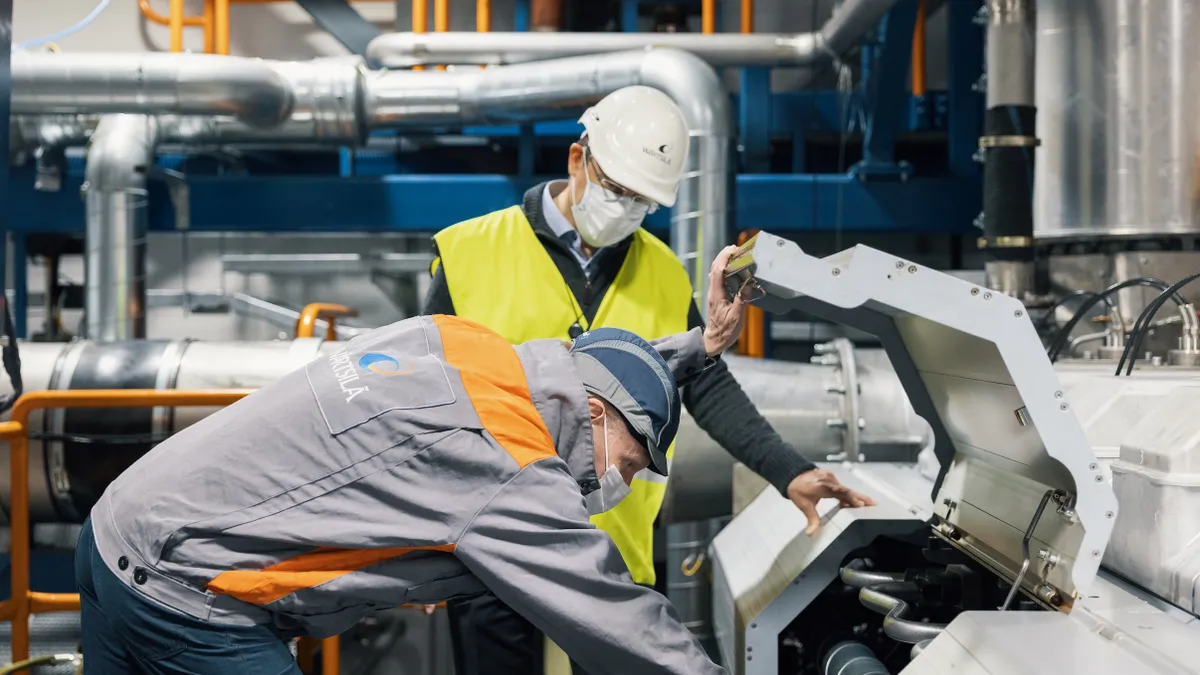The following is a contributed article by Jeff Lewis, a partner at Guidehouse.
The time has come for utilities to harness the power of satellites.
Satellite technology has long been used by government agencies for everything from the disposition of enemy forces and bomb damage assessments to tracking the rise of sea levels. The agriculture industry has been successfully using satellite imagery to improve crop yields, and the insurance industry uses satellites for damage assessments and claims processing after hurricanes. Although the utility industry has been slow to adopt satellite technology, recent advancements in satellite sensors, optics and image processing throughput merit a fresh look.
Restoration challenges after major storms
One of the more compelling utility use cases for satellite technology is in support of power outage restoration activities following a major hurricane, where millions of customers are left without power and billions are spent on restoration. For example, Hurricane Sandy caused tens of billions of dollars in damage across the utility industry and costs rose to nearly $100 million per day at one utility particularly hard hit by the storm. In addition to the hardship on customers, regulatory relations and corporate reputations suffer. A poor response to a major hurricane or storm event is one of the utility industry’s greatest risks.
Utility operators face tremendous challenges following a major storm event, and many of these obstacles stem from a lack of situational awareness in the hours and days following the storm’s impact on the service territory. Current operational technologies such as outage management systems, supervisory control and data acquisition (SCADA) systems, and smart meters can provide an initial estimate of how many customers have lost power and where they are located. However, those systems cannot tell operators the location and extent of physical damage to the grid or flooding in the service territory. This is an important distinction — early on, incident commanders do not know where the bulk of their resources will be needed for repairs.
Restoration efforts for feeders with little or no physical damage or flooding may only require a few specialized resources to restore power. In contrast, a feeder that has sustained broken poles, trees entangled in the infrastructure, and conductor and transformers on the ground will require material deliveries, numerous line crews, vegetation crews, specialized equipment, and days of effort to restore electric service. Expediting the repair of this type of damage can be the most consequential factor in reducing the duration of a storm event.
Another critical challenge is flooding — utilities must often wait for flood waters to recede from neighborhoods before they can begin restoration. Yet, we often see lost time and money spent dispatching crews to the area before that flooding knowledge is gained and the outage is put on a "no access" list.
Utilities face harsh criticism from customers and regulators regarding timely and accurate estimates for restoration (ETRs). Stakeholders are demanding ETRs in hours rather than days, often long before the utility has a full picture of the damage and flooding across its service territory. As a result, initial ETRs are often inaccurate and require frequent corrections that ultimately erode confidence in the utility.
Imagine if satellite technology could provide situational awareness to utility incident commanders as a storm is still unfolding or has just passed, even before they have begun dispatching crews to assess damage and flooding. Improved situational awareness would result in faster restoration for customers and timelier and more accurate ETRs.
Improving situational awareness with satellite technology
The resolution of optical imagery has improved remarkably over the last several years. Commercial imagery is now available in sub-50-centimeter resolution. Each pixel in the image is about the size of home plate on a baseball diamond from nearly 500 miles into space. These images could identify utility-related damage and flooding. Analysis of the data could provide a heat map, giving incident commanders the situational awareness they require to make informed decisions to appropriately allocate resources.
Synthetic-aperture radar (SAR) is another satellite technology that could support restoration efforts, particularly when clouds are obscuring the utility’s area of interest and optical images are not available. Although limited in number, SAR satellites are being launched at a brisk pace. SAR can see at night and through clouds, so tasking is flexible. While SAR can effectively identify flooding and large structure damage, we are currently evaluating its effectiveness for the utility storm damage use case.
Satellite technology could be a game-changer for advancing the timeliness and accuracy of situational awareness for utility incident commanders. The sooner incident commanders can identify specific infrastructure damage and flooding, the faster they can effectively prioritize outages and muster and dispatch the appropriate resources. If satellite technology could help reduce the duration of a major hurricane restoration effort by 2 or 3 days, the performance improvement could result in savings in the tens of millions of dollars.
Ultimately, satellite technology could help utilities restore customers faster, for less money, with improved customer communications. Often we find the first step for a utility is to understand the appropriate use cases that demonstrate value, determine the specific technologies and providers that can best support, and organize a "Proof of Value" effort to see where the best opportunities exist. Satellite technology should play a significant role in utility operations and planning going forward — if you are not planning for it today, you may already be behind the restoration curve.

















